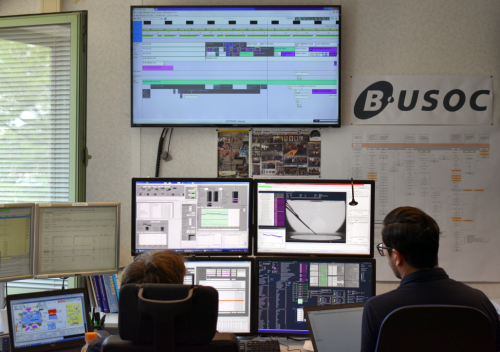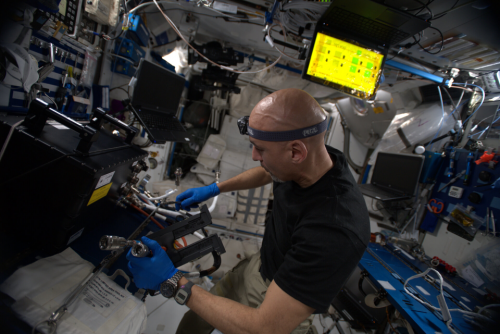After the end of the CompGran mission in 2019, the Reference mUltiscale Boiling Investigation (RUBI) Experiment Container was installed, albeit not without any hiccoughs. After a delay of one month due to a faulty power cable, the experiment could finally start.
The experiment
The core of the RUBI experiment is the Boiling Cell with integrated Forced Convection Loop (FCL) and a Substrate Heater. This Boiling Cell is filled with N-perfluorohexane, which is the primary component of FC-72, an electric coolant. The boiling process will take place at the substrate heater, initiated by locally superheating an artificial nucleation site using a focused laser spot.
The temperature distribution of the substrate heater surface is measured from the backside by a high-speed IR camera while the bubble shapes are observed via high-speed black & white camera. After some time however, the IR camera stopped working, unfortunately reducing the science output.
The boiling cell is equipped with a thermal control system allowing temperature regulation in the range of 30°C to 70°C. Furthermore, the absolute pressure inside the boiling cell can be adjusted using a bellows-compressor pressure control system, which in turn has different effects on the experiment.
Why in space?
The objective of the core experiment is to initiate a single vapour bubble on a boiling heater, to observe stable bubble(s) at defined boundary conditions and to obtain these data for different heater fluxes. The boundary conditions will be defined by the presence of a nearby adjustable electric field created by a washer shaped electrode adjustable above the substrate heater surface, and a shear flow created by the FCL.
In space there is little to no effect of gravity like thermal convection or bubbles rising to the surface. Therefore, the RUBI experiment can focus on the improved modeling of the boiling processes, which applies then also for boiling under gravity with a variety of applications in chemical industry and energy technology.
In addition, the results will be applied to the design of future space applications like:
- two-phase cooling loops
- cryogenic fuel storage
- cooling of electronic devices
After the success of the first RUBI mission, it has been decided to perform an extension on this mission in the form of RUBI-X. Started on October 15 2020, RUBI-X picks up where the previous mission left by performing additional runs with different combinations of parameters.


